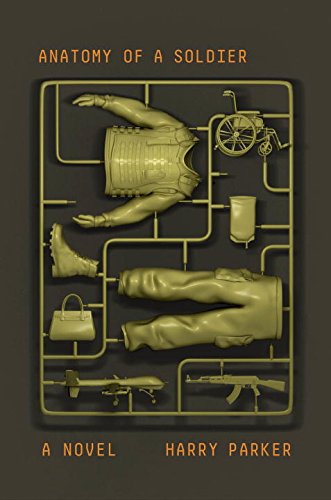
Anatomy of a Soldier by Harry Parker

Knopf, 2016
There’s usually a distance between the objects and Barnes. Despite many of objects becoming “close” to the protagonist, they usually speak for their own role in the story while at the same time intuiting the feelings of Barnes. This distance is reflected in the detachment or gap in understanding between so many groups and individuals in the book, regardless of ties or affiliation. Despite inhabiting proximate spaces, there are so many gaps, whether between soldiers and civilians (at home or in Afghanistan), officers and enlisted men, doctors/therapists and patients, or several other comparisons. Part of the book’s power comes from highlighting this gap in understanding and/or empathy.
It’s clear that, just like these objects, the captain is an interchangeable cog, one of many that have come before and others who will come after him. Oftentimes the objects treat him as an another object, calling him by his tag number instead of his name. And therein lies one of the bigger points, I think. A name, an ID number, or a label can help us identify something but it doesn’t necessarily follow that we will understand it better. To the specifics here, what makes Barnes special is how he interacts with those around him, whether in his command or locals (Afghanistan or Britain). His experience…what he has seen, done, and gone through…highlights his uniqueness. And Barnes isn’t immune from the difficulty in understanding. At times he feels lost in what he is supposed to do or say. One of the funny quirks of the novels is that many of the objects demonstrate an understanding of Barnes better than most human characters.
So back to the narration style. While I think it largely succeeds, there are also several moments where I thought it detracted from the story or didn’t quite work. Several of the chapters begin with “I am a …” or describes its attributes. Other chapters leave you guessing for a while, in a “What’s My Line” manner, until it becomes clear what they are. I’m not sure which worked best or worst…I think I wearied of the approach long before the end of the book. The book is uneven at times, although not because of the objects chosen. Some of the least likely objects, describing things in almost flat, unemotional terms, can provide the most moving narrative.
While Barnes is the central focus, many items are associated with other characters. We see Afghan families helping and fighting Barnes and his men. Family members and friends at home grapple to deal with the changes the blast has caused, usually coming up short, while fellow soldiers provide the most support. Professionals work tirelessly to first save Barnes, then help him transition into a new life. The interactions with other people highlights the gap between military and civilian life, where the general population often falls back on cliches to mask their discomfort.
An interesting and engaging first novel. I look forward in seeing where Parker goes from here.
Links:
- Book review
- The publisher’s page on the book, with links to an excerpt and more on the book & author
- More excerpts and links at Harry Parker’s Twitter feed